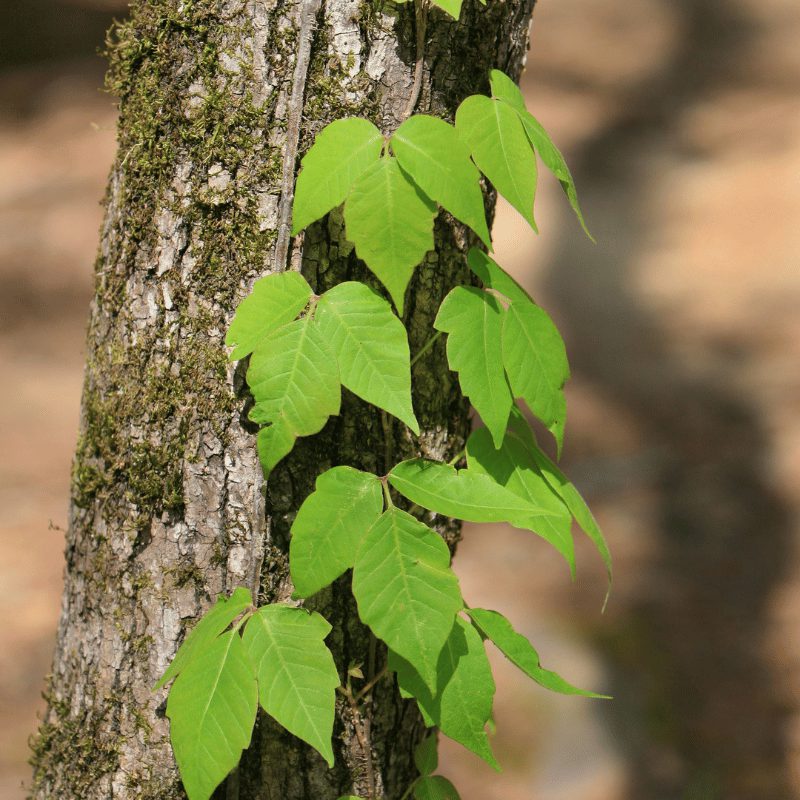As pet owners, we want to keep our furry friends safe and healthy. However, sometimes we may not be aware of the potential dangers that lurk in our surroundings. One such danger is poison ivy, a plant that can cause an allergic reaction in humans and animals.
This article will explore whether dogs can get poison ivy, what happens if they lick it, how to treat it, and where to find it. By understanding these important facts, you can help protect your dog from the harmful effects of poison ivy.
Can Dogs Get Poison Ivy?
Yes, dogs can get poison ivy, just like humans. Poison ivy is a plant that contains an oil called urushiol, which causes an allergic reaction in both humans and animals. When a dog comes into contact with poison ivy, it can develop a rash or blisters.
What Happens if a Dog Licks Poison Ivy?
If a dog licks poison ivy, it can experience symptoms such as swelling of the face, mouth, and tongue. They may also experience vomiting and diarrhoea. It is essential to keep your dog away from poison ivy and seek veterinary care if they have ingested it.
How Do You Treat Poison Ivy in Dogs?
If your dog has come into contact with poison ivy, washing their skin with soap and water is essential. You can also use a mild shampoo to help remove any remaining oil from their skin. If your dog has developed a rash or blisters, you should take them to the vet for treatment. Your vet may prescribe medication to help relieve their symptoms.
Where Can You Find Poison Ivy and What Does it Look Like?
Poison ivy is primarily found in North America. Poison ivy is native to the United States, Canada, and Mexico. Found in environments such as wooded areas, fields, and along roadsides. It is a vine that can grow up trees or along the ground. The leaves of poison ivy are green and shiny with three leaflets. The leaves may also have a reddish tint in the spring or fall. It is crucial to identify poison ivy to keep yourself and your pets away from it.

Similar plants in other parts of the world can cause a similar allergic reactions, such as poison oak and poison sumac. It is vital to research the plants native to your area and learn how to identify them to keep yourself and your pets safe.
Poison Ivy Symptoms in Dogs
- Red, swollen skin
- Itching
- Vomiting
- Diarrhoea
- Blisters
Eliminating Poison Ivy: Digging it Up or Using Herbicides
To get rid of poison ivy, you can try to dig it up and dispose of it in a sealed bag. You can also use a glyphosate or triclopyr herbicide to kill the plant. Be sure to follow the instructions on the label carefully and wear protective clothing when applying the herbicide.
Dangerous Plants for Dogs: A Brief Overview and Why They Are Poisonous
- Azaleas and Rhododendrons: These popular ornamental plants contain grayanotoxins, which can cause vomiting, diarrhoea, weakness, and even coma or death in dogs.
- Daffodils: All parts of the daffodil plant contain lycorine, which can cause vomiting, diarrhoea, abdominal pain, and even cardiac arrhythmias in dogs.
- Tulips: The bulbs of tulips contain toxins called tulipalin A and B, which can cause gastrointestinal irritation, drooling, loss of appetite, and depression in dogs.
- Lily of the Valley: This plant contains cardiac glycosides, which can cause vomiting, diarrhoea, irregular heartbeats, seizures, and even death in dogs.
- Sago Palm: All parts of the sago palm contain cycasin, which can cause liver failure and death in dogs. Symptoms include vomiting, diarrhoea, lethargy, seizures, and liver damage.
- Oleander: This popular landscaping plant contains cardiac glycosides that can cause vomiting, diarrhoea, irregular heartbeats, seizures, and even death in dogs.
- Castor Bean: The seeds of the castor bean plant contain ricin, a potent toxin that can cause vomiting, diarrhoea, abdominal pain, seizures, and even death in dogs.
- Yew: All parts of the yew plant contain taxine alkaloids that can cause vomiting, diarrhoea, abdominal pain, irregular heartbeats, seizures, and even death in dogs.
- Autumn Crocus: This plant contains colchicine, which can cause gastrointestinal irritation, bloody diarrhoea, liver and kidney damage, and even death in dogs.
- English Ivy: This popular houseplant contains triterpenoid saponins that can cause vomiting, diarrhoea, abdominal pain, and even coma or death in dogs.
- Poison Ivy: This plant contains urushiol, an oily resin that can cause skin irritation, itching, redness, and swelling in dogs. Ingestion can cause vomiting, diarrhoea, and abdominal pain.
Conclusion
Dogs can get poison ivy just like humans. Knowing where to find poison ivy and what it looks like can help you keep your pets safe while enjoying the outdoors. If your dog comes into contact with poison ivy, washing its skin immediately and seeking veterinary care is essential.












